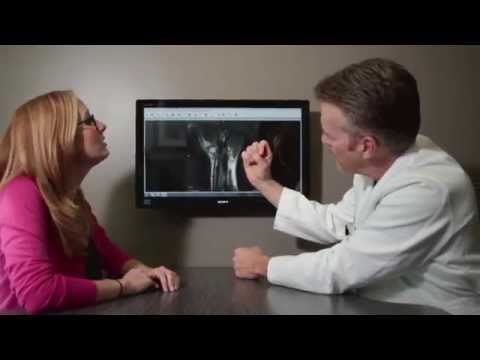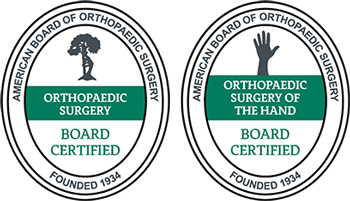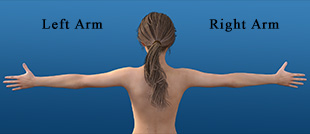Cumulative Trauma Disorder (CTD)
Contents
- 1 What are Cumulative Trauma Disorders?
- 2 What causes Cumulative Trauma Disorders?
- 3 What are the symptoms of Cumulative Trauma Disorders?
- 4 How are Cumulative Trauma Disorders diagnosed?
- 5 How are Cumulative Trauma Disorders treated?
- 6 How can Dr. Knight help you with Cumulative Trauma Disorder?
- 7 Frequently Asked Questions:
What are Cumulative Trauma Disorders?
The term Cumulative Trauma Disorder (CTD) refers to an array of conditions that are all precipitated by repetitive stressors on muscles, joints, tendons, and delicate nerve tissues. Overuse syndromes, repetitive strain injuries, regional musculoskeletal disorders, and repetitive trauma disorders are all synonyms for Cumulative Trauma Disorders. These disorders are most common in the hands, wrists and elbows. Carpal Tunnel Syndrome, Bursitis, Cubital Tunnel Syndrome, DeQuervain’s Tenosynovitis, Radial Tunnel Syndrome, Tendonitis and Trigger Finger are all examples of CTDs.
What causes Cumulative Trauma Disorders?
Depending on the area of injury there may be one or multiple causes for CTDs. Repetition of small awkward movements, poor posture, improper work techniques, inadequate workstation setup, and excessive or forceful grasping can all contribute to injury. Initially the injury may seem inconsequential, however, over time the cumulative effect can be debilitating. Unlike many other medical conditions, CTDs have become more commonplace as society becomes more dependent on technology.

What are the symptoms of Cumulative Trauma Disorders?
CTDs may present with pain, tenderness, edema, tingling, weakness, numbness, and loss of joint mobility or coordination. Inflammation may worsen at night resulting in increased stiffness in the morning. Symptoms may appear immediately or weeks to years after the initial injury and vary based on diagnosis.
How are Cumulative Trauma Disorders diagnosed?
Proper diagnosis of Cumulative Trauma Disorders relies on a detailed medical history and review of symptoms as well as a thorough physical examination of the affected extremity. X-rays may be used to determine bone involvement while MRI (magnetic resonance imaging) and Ultrasound may be used to visualize the surrounding soft tissues. Based on the overall findings the physician will provide specific diagnosis.
How are Cumulative Trauma Disorders treated?
Non-surgical
Implementing proper body mechanics and ergonomics is a simple way to minimize stress and reduce the incidence of Cumulative Trauma Disorders. Altering workstation design and implementing proper posture can relieve pressure and even eliminate pain. There are a wide variety of products (chairs, keyboards, mousepads, etc.) specifically designed to optimize individual performance and prevent injury. Additionally, rest, ice, splinting, hand therapy and the use of over the counter pain medications like aspirin and ibuprofen may also relieve symptoms and reduce inflammation.
Surgical
While most CTDs respond well to conservative treatment, the most severe cases often require surgical intervention. The indicated procedure is contingent upon the actual diagnosis. Many times, a minimally invasive approach is possible. SECTR is a 10-minute outpatient minimally invasive Carpal Tunnel Release procedure and is just one example of the wide variety of choices available to individuals needing surgery. It is important to discuss all treatment options with your Doctor to determine the best plan to suit your needs.
How can Dr. Knight help you with Cumulative Trauma Disorder?
In his many years of practice, Dr. Knight has treated many patients with CTDs. Usually through conservative treatment he can resolve the problem. Occasionally, however, surgery is necessary. If you are in pain and want to be seen and treated by a doctor with unparalleled experience in treating CTDs and RSIs, then you can be in no better hands than those of Dr. Knight.
Our offices are easily accessible from Dallas and Dr. Knight is considered one of the top hand doctors in Dallas, TX. Come to our Dallas office or Southlake office to see what he can do for you.
Frequently Asked Questions:
Which cumulative trauma disorders are the most common?
Carpal tunnel syndrome and tendinitis are the most common forms of CTD that doctors see and treat. Both are caused by extensive overuse of various parts of the body, carpal tunnel obviously deals specifically with the upper extremities, but tendinitis can affect literally any tendon in the body, and so any joint that can be overworked either in work or play can suffer from a CTD.
Are cumulative trauma disorders the same as repetitive strain injuries?
Yes, Cumulative Trauma Disorders are known by several different names, including Repetitive Strain Injuries, Repetitive Motion Disorders, and Overuse syndromes. All of these names are just slightly different ways of describing the same group of interrelated syndromes.
Can I only get cumulative trauma disorders from my job?
While cumulative trauma disorders are statistically most likely to occur in a workplace environment, they are not restricted to those specific arenas. A non-ergonomically optimized workplace is a very common underlying cause of these disorders, but many if not most people also have workspaces at home, and may use computers for gaming, creative writing, or internet use. Often, these activities can take up more of a person’s daily life than work-related activities, so it is very easy for someone to develop a cumulative trauma disorder that is not work related. Other hobbies like sports can also contribute to developing these conditions, particularly tendinitis.
Disclaimer
HandAndWristInstitute.com does not offer medical advice. The information presented here is offered for informational purposes only. Read Disclaimer

























